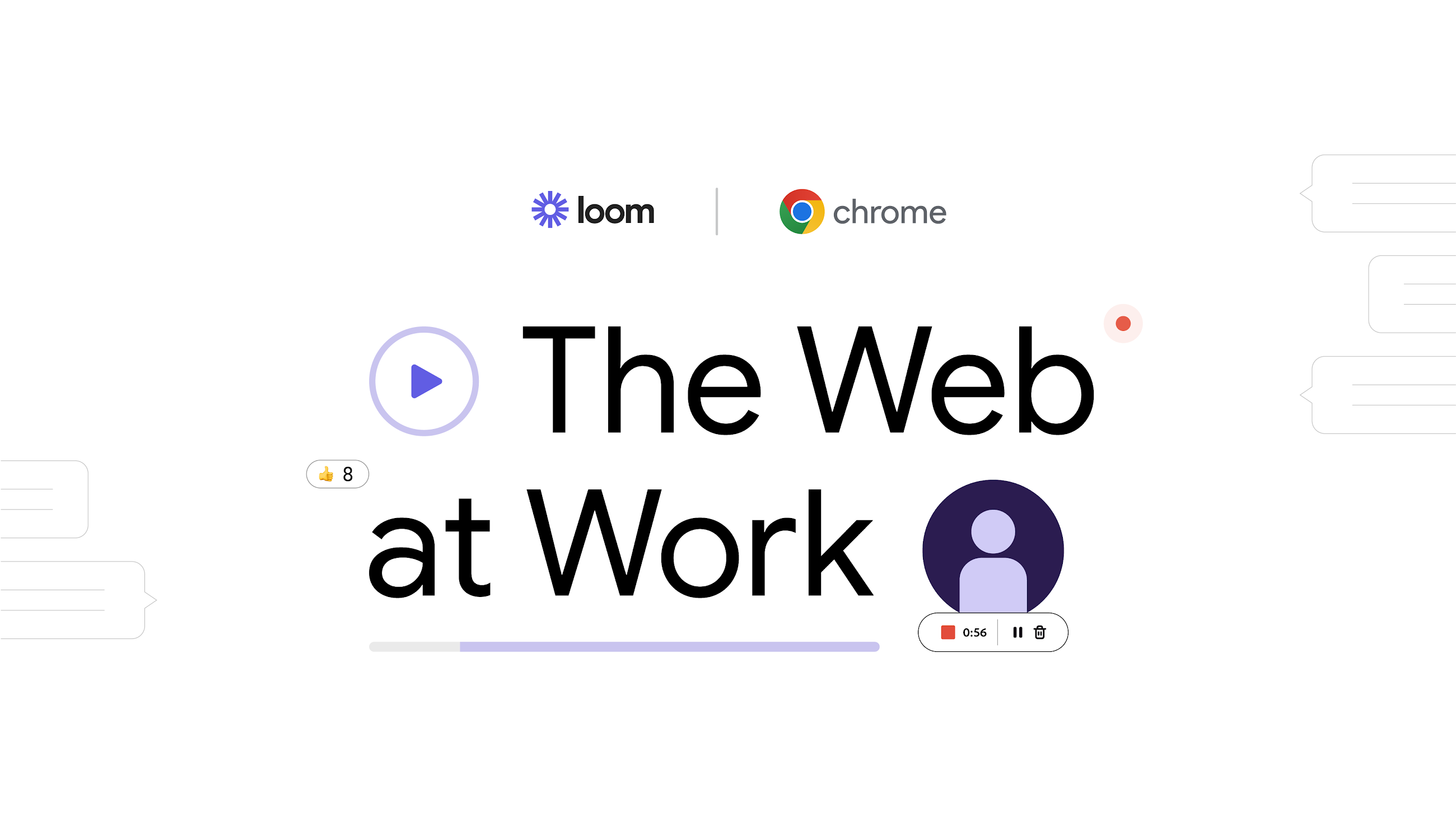Working in the browser has become the norm for many companies. There is a whole ecosystem of applications and technologies that support people being productive in Chrome every day. In our “Web at Work” series, we take a closer look at browser-based apps that are changing the modern work experience.
Today we’re featuring Loom. The online video and screen recorder that has given people a new way to communicate and connect in the workplace.
It all began in the browser
Loom launched its Chrome extension in 2016 with one goal: enable people to communicate more effectively and efficiently. The tool allowed people to record and share their screen and camera in real-time, providing an easy way to collaborate, connect, and share information, all while maintaining the security and trust of its users. Talking through new data, sending a colleague feedback, or replicating and recording a bug in a development environment were now easily captured by a few clicks within the browser through the Loom extension. The extension was accessible in the Chrome Web Store and works directly in the browser. This convenience has made Loom a popular choice, with over 20 million people across 350,000 companies using the platform.
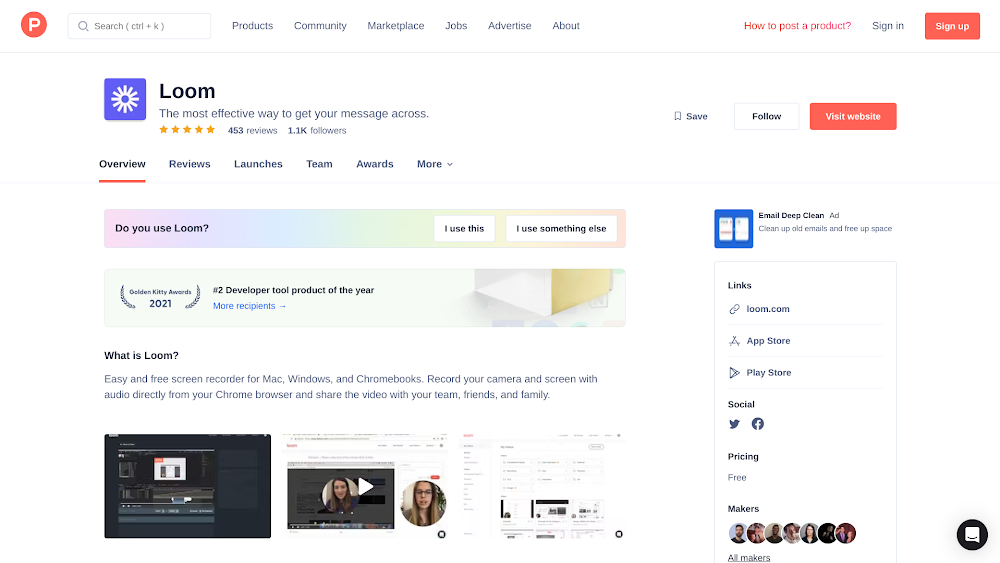
Loom’s Chrome extension. Launched June 2016
Working on Chrome
In the early stages of the Loom, Chrome allowed co-founders Vinay Hiremath and Joe Thomas to launch a product and gain feedback from its early customers with speed. In a time when asynchronous video messaging platforms were not as popular as they are today, users could try the product and begin collaborating without downloading additional software. Launching as a Chrome extension lowered the barrier for entry and allowed more users to try early versions of Loom.
With co-workers discussing potentially confidential company information, Loom’s team held itself to stringent security and compliance standards. This included strict user authentication, periodic penetration testing, end-to-end data encryption, and adhering to GDPR and CPRA compliance- supported through Chrome’s browser and extension security settings.
Building on Chrome also allows Loom to offer extra privacy and security features within the user experience (UX). While screen recording, customers can blur sensitive information they want to keep confidential. This feature customization allows senders to trust their tools knowing sensitive information will remain confidential.
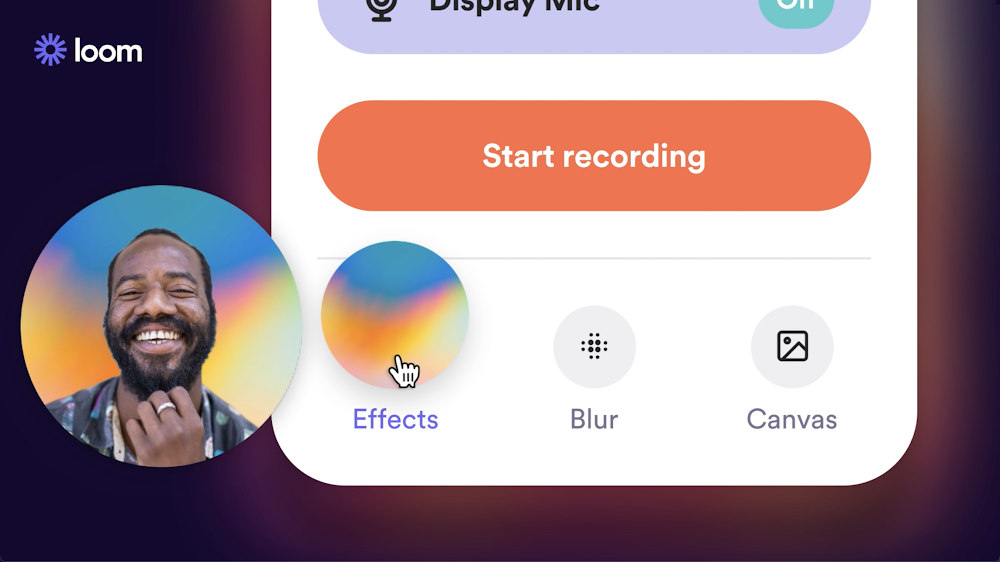
Loom’s blur feature. Accessed within the Chrome extension.
Fewer meetings, more connection
Loom was built to improve communication and time management, but it’s also proven invaluable in the remote and hybrid environment. Almost two-thirds of people working from home feel isolated or lonely. Remote workers miss the social, serendipitous interactions that happen naturally with in-person work. Written messages lack tone and can be prone to misinterpretation, and virtual meetings are tiring– particularly for those who aren’t participating directly. A Loom video offers a more natural online alternative that encourages interactions like responses and spontaneous conversations. Loom’s success lies in its ability to make online communication more human.
Loom is so good at supporting communication that people started using it outside the workplace: explaining dense topics to friends, pitching destinations for a group vacation, and personalized congratulatory messages have all been shared powered by Loom technology.
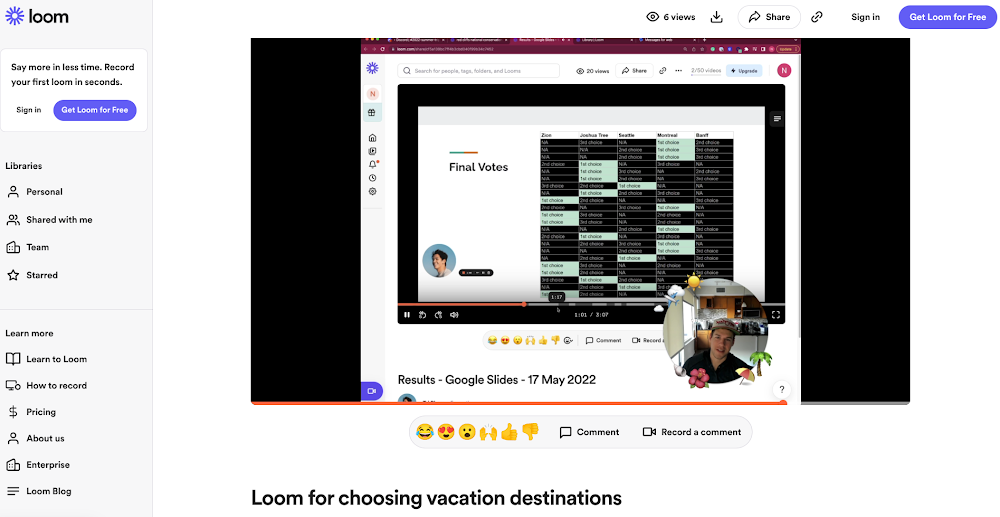
Loom being used to plan a group trip.
The Loom boom
With expanding use cases and emphasis on keeping teams connected, the Loom team is working on improving the user experience for their growing customer base. They took advantage of Chrome’s extension platform improvements (the Manifest V3 Migration) this year and updated their Chrome extension. The result is a tool with a faster recording process, improved access to tools like Blur, Canvas, and Virtual Backgrounds, and a handful of fun features like dark mode and in-app sounds.
By enabling people to use video in their browser, Loom has made collaboration and connection more natural. Whether it’s for remote teams, online classrooms, or just connecting with friends and family across the globe, Loom’s technology harnesses the power of the web to bring people closer together.
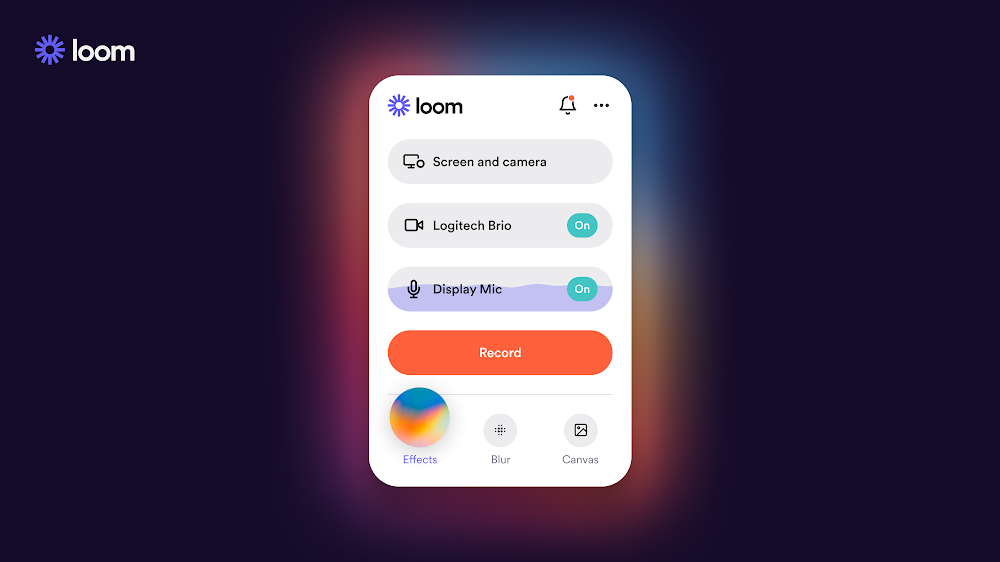
Loom’s newest extension. Released Spring 2023

